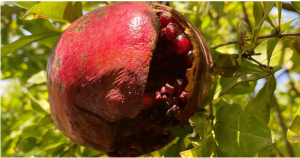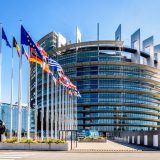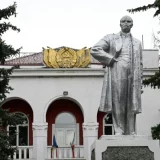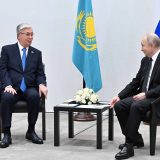Larissa has over 25 years’ experience managing humanitarian, conflict transformation & civic engagement programmes in the former Soviet Union and has a wealth of expertise in political and conflict analysis, facilitation of research and cross-conflict dialogue processes, including high level policy dialogues.
Larissa has worked for a number of international organisations in Russia in the North Caucasus and also in the South Caucasus, Central Asia and Ukraine. Between 2006 – 2019, Larissa worked as senior adviser for the Eurasia region at International Alert, after which she founded Independent Peace Associates.
This interview follows the publication of the report “Collective wounds: societal trauma and the Karabakh conflict”.
- Could you introduce the genesis of the Indie Peace project and structure? What sets its work apart from other organizations in the peace-building field? Can you present its objectives, concrete actions and areas of intervention?
I always wonder at this question that I have been hearing for almost 30 years – what sets you apart from this or that peacebuilding organization, why have you chosen this sphere of work, what do you bring that is new or significantly different, if some other organization is already “doing dialogue” ? Other professions don’t get asked this – i.e. if there is already one psychotherapist clinic in London, people don’t ask why would we need another and how is it different.
I truly believe that we need many more peacebuilding organizations than there are currently, and there should be much more substantial support for peacebuilding. We should be creating the conditions for coalitions of peacebuilders – a safe space for all, including those who don’t want to be associated with a particular organization, or with an NGO, for one reason or another, but nevertheless are willing and able, and have the social capital to work on conflict prevention, and peacebuilding. However, the support for such a peace movement is minimal, when compared with what is spent on war – it is ridiculous even to compare. And experience shows what a high price we pay for prioritising war and military expenditure over peace.
Of course, the peacebuilding sector is not ideal either. Unfortunately, there is a tendency towards a shift in values, with many visionaries leaving the field and their place being taken by professionals with technical skills and a project-based approach to peacebuilding. But I see this as part of a larger problem of the lack of support for the development of peacebuilding processes – instead peacebuilding is seen as something small-scale, a discreet, short-term intervention, from which arises the attitude that “someone is already doing dialogue.”
It seems our basic assumption that peace (or stability) can be taken for granted has proved to be an illusion – dispelled in the tragic context of the war in Ukraine. It sounds trite, but maintaining peace requires constant support. Peace must be nurtured – it is like good health, maintaining it requires you to look after yourself on a daily basis, to monitor your well-being and take preventive measures. We should relate to the world around us in the same way as our health. We should support and value peace, in order to identify and work with potentially conflict-generating tendencies, to facilitate communication between the parties at all levels, to provide equal opportunities for all to express their interests and fears. This is the only approach to find ways to resolve conflicts and to prevent them from becoming violent. It is important not to forget that we are all human and we see the world through the prism of our social experience and our environment, even through the prism of our ancestors. We are all the same in that we are capable of recognizing objective reality as well as becoming hostages to our subjective reality, not noticing how we are mistaken.
We established Indie Peace as a horizontal association, bringing together like-minded people with whom we have built professional relationships on our professional journey of several decades, both from the regions in which we work and the wider international community, and we are trying to be useful. We analyse the conflicts, enriching methodology with a nuanced approach that takes into account the relationship between how people feel, what people think and how conflicts can emerge. We believe that this creates a solid foundation from which to work on conflict prevention and transformation. We reflect on our experience and develop those approaches that worked and ditch those that didn’t work so well.
- Your previous report Collective wounds, societal trauma and the Karabakh conflict follows a field study carried out between March and July 2021. Why choose such a field of investigation and how did you proceed to interview people directly concerned by the conflict? What difficulties have you encountered?

This wasn’t my first study or engagement on trauma. I have been interested in trauma rehabilitation since the wars in Chechnya and the school tragedy in Beslan (2004), and other contexts. It has always been clear to me that such traumatic events can change not only the people they directly affect, but they also affect the whole of society and the relational dynamics with neighbours. The wars that accompanied the collapse of the USSR showed how widespread and rooted historical narratives are in the post-Soviet space, which, if skilfully instrumentalised, are a potential time bomb that can re-escalate conflict.
In the Autumn of 2020, when it became clear that this was not just another escalation of tension around Karabakh, but a full-blown war, I began to talk with friends on all sides of the conflict, with former colleagues and came to understand how traumatising narratives which had been transmitted from generation to generation for decades, began to be voiced as reality. From this sprang the idea to research the condition or disposition of the societies who find themselves in such a protracted conflict.
The whole process was difficult. You can’t say that some of it was easy, other bits were hard – I mean the emotional side of the process. But I was struck by the fortitude of the people I interviewed, the human ability to adapt to the brutal reality of war and its aftermath – to change, but to remain kind, even sympathetic to the other side. Also surprising was people’s thirst for peace, even though some saw that path to peace through war.
- You address several very important concepts based on the work of Ursula König and Cordula Reimann or Emma Hutchinson. Could you explain to us what is the difference between “individual trauma” and “collective trauma”? How do these different individual traumas gradually manage to form a « live together », to anchor themselves in a more global societal trauma?
These references to other analysis we felt were important to provide a theoretical and conceptual framework for the research and to situate the findings and even substantiate them somewhat. Collective trauma is such a context specific phenomenon, and there is little research into this in the Karabakh context, so it is useful to seek to understand how others have defined it. We ourselves do not attempt to redefine but offer the reader some interesting references that resonate with us.
I personally do not believe the distinction between ‘individual’ and ‘collective’ trauma is as clear cut as some would argue, but I felt the need to articulate the difference as I wanted to explore the role of trauma in driving and perpetuating conflict dynamics – i.e. as a cause of conflict, not only as a consequence. To clarify – I find that people often interpret any discussion of trauma as a ‘mental health’ issue and thus categorise it as a ‘humanitarian’ or a ‘psycho-social’ issue – and while that is important, I wanted to emphasise the usefulness of trauma as an analytical lens through which to enhance conflict analysis – and thus as a ‘peacebuilding’ and even a ‘political’ issue. Here we draw on Reimann and Konig to help explain the distinction between ‘individual’ and ‘collective’ – but it is Hutchinson’s work that explores in great depth how trauma shapes political communities, including the way in which communities try to make collective meaning of traumatic events.
I wouldn’t say that collective trauma is an accumulation of individual traumas (which is what your question implies). In war time, even if you are not directly affected by bombs, violence, bereavement, displacement, etc. nevertheless you experience the disintegration of everything around you that provided for stability in your life – social and political structures and ideological frameworks – and it is the process of seeking out and reconstituting new systems and making meaning of what has happened that is a key moment for peacebuilding.
- Can you also explain to us by what process people who have not been directly affected by the violence of a conflict, who have not experienced the “primary trauma” can finally experience the “secondary trauma”? And explain to us these other two concepts?
We don’t need to go to war and experience its horrors for ourselves to be affected by trauma. Recently, the mother of a twelve-year-old boy in London shared with me that her child had started to have difficulty sleeping, studying, even playing with his friends. It transpires that he is fearful of the possibility of nuclear war and has been asking his parents why they are doing nothing to stop this threat, which is obvious to him.
When we observe traumatic events, delve into them and engage emotionally with them, then this traumatic reality becomes ours in one way or another. Such engrossment can disrupt our adaptive resources, our sense of security and we experience fear, a sense of helplessness, even aggression. This is secondary trauma. And these days, when you can follow online what is happening almost anywhere in the world, it is difficult to distance oneself, especially from a traumatic context such as the war in Ukraine, which received so much coverage.
When people talk about the need for rehabilitation work with the war-affected, usually they are talking about those who received a primary trauma and ignore the influence of secondary and generational trauma on the emotional, mental and behavioural models of people. Yet this is something that will subsequently influence the whole fabric of society, impacting on socio-political processes, and thus on the potential for conflict transformation. This invisible sphere of work is not considered, and yet it is through working with all segments of societies that have experienced dramatic events in different ways that can bring stability in all respects and underpin the search for sustainable peace.
- What are the main findings that you draw from the results of your investigation concerning the functioning of societal trauma in Armenian and Azerbaijani societies and which echo other fields of study that you have been able to know?
No society is unique – they may have their specific attributes and cultures, but they are all made up of people whose psyche functions according to similar rules and schemas. Trauma is no exception. Two years ago, Indie Peace analysed 30 years of working with conflict in the Georgian-Abkhaz and Georgian-Ossetian contexts and it was clear that trauma has played a key role in the dynamics of these conflicts.
When I started processing my notes from the interviews for the study of trauma in the Karabakh context, I would cover the names of the interviewees to see if I could figure out for myself which whether this is Armenian or Azerbaijani. I often got it wrong – it was impossible to distinguish where they were from if the interview did not indicate the names of settlements or people. In fact, both Armenians and Azerbaijanis spoke in the same way about their grief, suffering, hopes, and the ways in which they would like to get out of this vicious cycle of violence.
And this says a lot – how work with societal trauma can be a non-politicised approach or a theme acceptable to all sides, and can provide a space for dialogue and practical cooperation between the parties, thereby bringing the humanitarian aspect into the foreground, prioritising the human factor. Such an approach can contribute to the creation of a more democratic socio-political reality in the region. Of course, this is not the work of one year, this requires a long-term approach, and the process requires patience, attention, expertise, a systematic contribution, but it can become a significant tool for building confidence measures between the societies.
- What are the various coping mechanisms for regaining a sense of security that have developed in the individuals and communities you met in the field? You speak in particular of the processes of generalization, confinement in stereotypes, rejection of reality, attachment to trauma and denial of it… Could you describe these phenomena? Are they similar among the “winners” and “losers” of the “44 Day War”? Do they allow to “mourn” their various losses?
There are many different coping mechanisms that people employ. But however they manifest themselves, for example, through the rejection of reality, the creation of parallel realities, and so on, for me the most important task in this study was to understand how these coping mechanisms can affect the dynamics of the development of the conflict. War changes the entire social fabric. The entire configuration of an individual’s social interactions, roles and expectations is subject to re-examination and change, and subsequently these social expectations become the most important factor in regulating the behaviour of the individual and the functioning of the whole society. Society activates its coping mechanisms and adapts to the conflict to ensure continued functioning, thereby decreasing the prospect of compromise.
In the process of forming new role expectations, every individual and every group understands how to live up to the expectations of the societies in conflict to which they belong. In this case, what you expect from yourself, those around you and society and the nation at large changes. A system of obligations forms, aimed at social, gender, ethnic and other groups as well as each individual, which creates an unwritten social contract with no room for discussion of its terms and conditions. The foundation of this contract is ‘I must’ putting aside individual agency. The process by which societal expectations become obligations for certain groups draws in everyone into supporting a system of violence, even if this is not what the individual or group want. Meanwhile, this is presented as the will and desire of every person and the nation as a whole. The conflict is essentially becoming a mechanism that functions through societal regulators, and one that is increasingly self-regulated by the societies themselves, maintaining through social control just the level of tension necessary to keep the conflict going.
- You talk about social representations that you summarize in “everything is possible!” or “all or nothing” for each other or even the unpredictability experienced in the situation. How is this embodied in speech and behaviour and what are the consequences of these phenomena on the psycho-social reconstruction of these communities?
War plays cruel games with the public consciousness. And people should be aware of this, this conversation should be held openly in the societies. Societies that have undergone a traumatic experience such as war have, on the one hand, a restricted vision of reality, wherein everything tends to be perceived through the narrow lens of danger, survival, and the search for support and a new system of security. On the other hand, this search for security can inspire creativity – give rise to numerous manoeuvres and suppositions and decisions that would not arise in the absence of the traumatic experience. The war of 2020 sent the message to all sides of the conflict that ‘anything is possible’. It shook the foundations of a thirty-year-old belief that society had grown accustomed to.
I would even say that the war of 2020 significantly expanded the range of the permissible in the wider post-Soviet space, i.e. a signal that ‘we can do that too’ – as the idea of a military solution to conflicts somehow became more acceptable in the collective mindset, and something we see in Ukraine today.
Victory created an appetite for more victories in Azerbaijani society, a desire to achieve just as much in other areas of life, both at home and abroad, which can carry the risk of disappointment.
Meanwhile, Armenian society is in state of uncertainty and unpredictability that affects all aspects of people’s lives. The mood could be described as ‘all or nothing’, fostered by the victory some thirty years ago and the way the victory has been used in public discourse. This maximalist approach has hindered flexibility in public thinking about the unresolved conflict, limiting the ability to entertain any kind of political compromise. This mentality was in play in cases where, for instance, people forced to leave their homes during the 2020 war would burn them down as they fled.
When seen through this “all or nothing” lens, the outcome of the war is perceived as catastrophic. Reinforcement of this way of thinking fosters a public perception of the situation as “nothing”, ignoring the potential possibilities.
By contrast, the Azerbaijani defeat three decades ago and the difficult conditions that those most affected, such as IDPs and border communities found themselves in enforced a type of thinking and behaviour that was more flexible, more pragmatic. At present, Azerbaijani society does not yet have unlimited access to the reclaimed territories, but they are content in the knowledge that they won them back. The habit of simply waiting it out, learned over three decades, is still in play.
In the region we observe the search for strength in powerful allies which can be interpreted as a search for protection. The assumption has been that with enough support, and the ability to forge a specific type of relationship with a major power, then anything is possible.
- How is the use of violence justified by Azerbaijani and Armenian communities or what role does it play in the social management of trauma? You seem to be talking about reasons both related to societal trauma and phenomena of political instrumentalization of this trauma… Could you explain to us the mechanisms at play on this question?
There are many factors here, but here are just a few: the traumas of the genocide of the Ottoman Empire, the first Karabakh war, living for so many years in conflict with regular escalations, as well as the 2020 war and all its consequences – all these traumas have created the conditions for the instrumentalization of violence by the societies, normalising violence and destroying any progress made towards building peace.
On the other hand, militaristic and nationalist propaganda maintains the societies in a state of war even in the absence of open hostilities. Violence has reached a new level, taking on qualities that were present during the 44-day war, and becoming an inseparable part of the post-war reality.
Everyday violence is seen as part of a long-term strategy to achieve certain goals, even a ‘final war’, into which it can all escalate.
In post-war societies, a close link to traumatic events is maintained through the population that lived through the war. The scale of human loss and pain suffered play a big role in this. Respecting the memory of those who have fallen hinders the space for reflection, wherein societies can acknowledge that continuing hostility and violence will lead to even greater losses. At the same time, the parties of war skilfully use this memory to maintain the degree of tension necessary, to keep the conflict stoked and ready for escalation.
- What are your main recommendations to address this ongoing risk of conflict escalation? How can we work with the legacy of these traumas to build peace?
There are many recommendations, but they are oriented towards two overarching objectives:
First, there needs to be a recognition of the phenomenon of societal trauma, the significant influence it has on people’s lives, on societies affected by conflict, and the need to work with it through a trauma-informed approach.
Secondly, it is essential to find an alternative, a new system of societal security based not on confrontation but on dialogue and cooperation, as a means to ensure the search for security.
It amazes me how societal trauma is ignored in peacebuilding and in political discourse. The lack of understanding of how trauma manifests itself in the context of conflict and how it affects the long-term perspective of conflicts leads to the same mistakes and history repeating itself. By studying how trauma manifests itself in the conflict context and influences its long-term prospects, we intend to bring a new psycho-sociological dimension to conflict analysis, broadening it out to enable emotions or ‘the human factor’ to be taken into account. Comprehending the condition of societies in conflict, the way they perceive their reality and look towards the future, is no less important predictor of future events than political, geo-political or economic analysis. Indeed, an analysis that highlights the intersection between psychological, social and political can provide new insight and help identify ways forward for peaceful conflict resolution.








